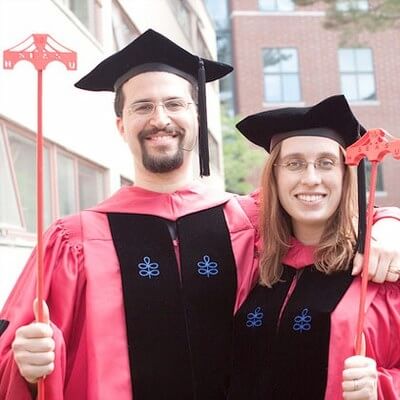News
Harvard University’s doctoral programs received exceptionally high evaluations in the National Research Council’s Assessment of Research Doctoral Programs, which was released on Tuesday (Sept. 28).
The long-anticipated report, a significant study of doctoral education across the nation, rated nearly 5,000 programs at 212 institutions on the basis of quantitative and faculty-assessed data concerning research productivity, student outcomes, and diversity of environment, among other variables.
Programs were given two overall ranking ranges to reflect the complexity of the data. Of the 52 Harvard programs in the survey, 27 placed as high as first in at least one of the overall rankings. Ninety percent of the University’s programs placed as high as fifth in at least one of the overall rankings.
The rankings of select graduate programs at the Harvard School of Engineering and Applied Sciences (SEAS) highlighted the continued renewal and growth of the school and longstanding efforts to enhance academic programs.
“With our recent transition from a division to a School, we are extremely encouraged that the NRC rankings reflect the growing dynamism of our multidisciplinary graduate programs,” said Dean Cherry A. Murray. “Moreover, given the stunning intellectual strength and breadth of Harvard, our engineers and applied scientists are smack dab in the middle of one of the most amazing places in the academic universe.”
National Research Council Rankings
Doctoral Programs (ranked in 2010, covering data from 2001-2006)
The "R-rankings" are regression-based and have a reputational component. Faculty raters were asked to rank the programs they reviewed. These rankings were then regressed against the 20 key variables that went into the rating. For every program, 500 regressions were run, and 500 ordinal rankings were thus derived. The 5th percentile is the value of the ranking at that point in the distribution, as is the 95th. We can say with 90% confidence that the true ranking falls inside this interval.
The "S-rankings" are constructed differently. Faculty respondents were asked to identify the most important of every one of the 20 key variables. Weightings for every variable were derived based on that identification. Programs were then ranked on every program’s value of those 20 variables, weighted accordingly. The 5th – 95th percentile measures represent the 90% confidence interval for the true ranking of the program.
- Applied Mathematics
- R Ranking Range: 12 (5% percentile) - 21 (95% percentile)
- S Ranking Range: 5 (5% percentile) - 17 (95% percentile)
- Applied Physics
- R Ranking Range: 5 (5% percentile) - 27 (95% percentile)
- S Ranking Range: 3 (5% percentile) - 18 (95% percentile)
- Computer Sciences
- R Ranking Range: 6 (5% percentile) - 22 (95% percentile)
- S Ranking Range: 3 (5% percentile) - 19 (95% percentile)
- Electrical and Computer Engineering
- R Ranking Range: 4 (5% percentile) - 15 (95% percentile)
- S Ranking Range: 1 (5% percentile) - 3 (95% percentile)
Notes: These data, while valuable, do not reflect the state of SEAS today (e.g., since the survey was completed in 2006, SEAS has had over a dozen new faculty hires; increased diversity among the student, faculty, and staff populations, and reported record-high levels of sponsored research dollars).
In fact, the rankings took place before the Division of Engineering and Applied Sciences transitioned to a school (2007-2008). Further, as SEAS does not have traditional departments and is closely tied with programs through the Faculty of Arts and Sciences (with more than 30% of our faculty being joint appointments) it is wise to look at related programs (e.g., Physics, Mathematics, Biology, etc.) in addition to the programs represented above.
Cutting-edge science delivered direct to your inbox.
Join the Harvard SEAS mailing list.
